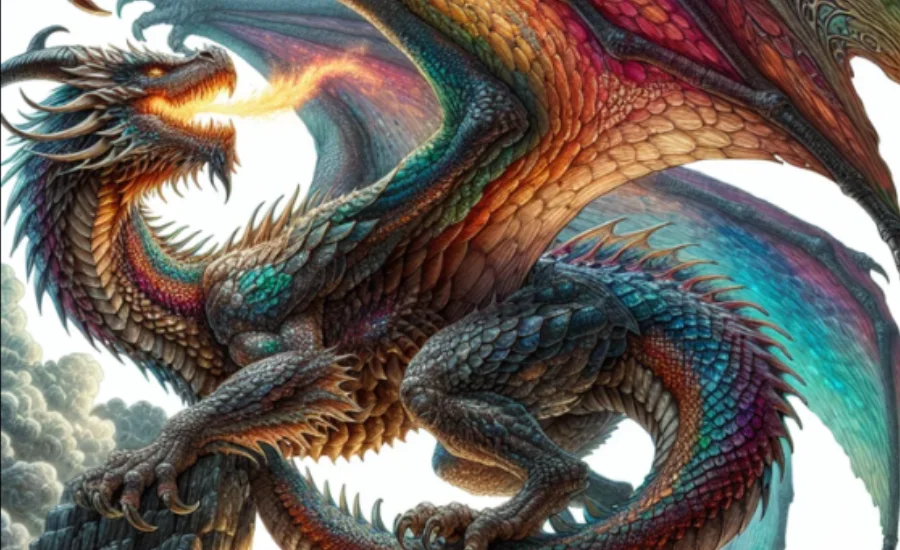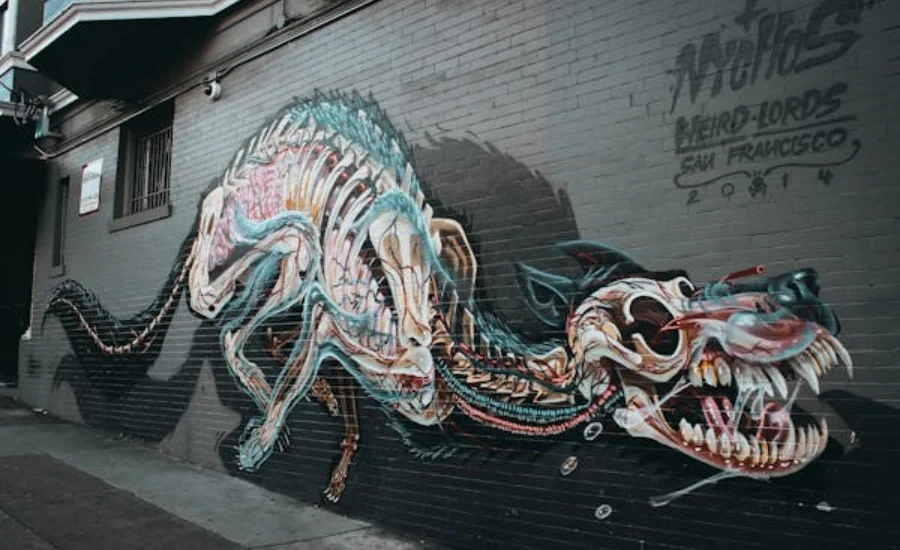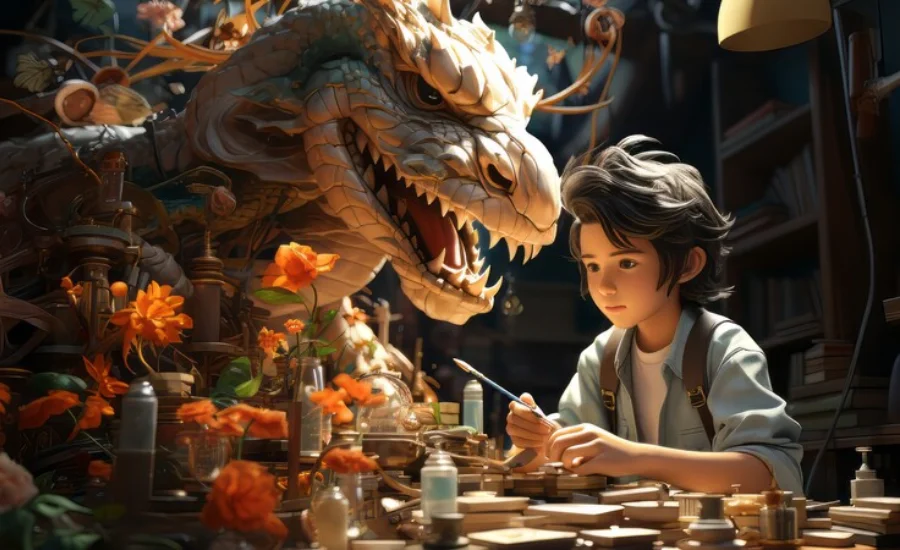Drawing:5z_boyjkm98= Dragon: Greetings and welcome to this extensive book aimed at assisting you in becoming a skilled illustrator of dragons. Regardless of your level of experience, you will discover crucial methods and insightful advice that will greatly improve your sketching abilities. We will begin by delving into the basic anatomy of these mythical animals, giving you a strong basis upon which to build your creative endeavors.
You’ll learn how to capture the minute details that give your dragons life as you work through this resource. With an emphasis on useful tactics and guidance, this book is designed to enable artists of all abilities to produce breathtaking dragon pictures. Let your imagination run wild and let’s go on this creative journey together!
Understanding Drawing:5z_boyjkm98= Dragon: The Foundation of Your Illustration

It’s important to comprehend the basic anatomy before you start sketching dragons because this knowledge will guide your drawing technique. Despite being legendary animals, dragon designs frequently draw inspiration from the anatomical characteristics of real animals, such as birds, mammals, and reptiles.
The key parts of creating a well-proportioned Dragon Art including the head, body, wings, and tail, will be discussed in this section. A firm understanding of these fundamentals will form the framework for your drawings, allowing you to produce inventive and anatomically realistic dragons.
Constructing the Dragon: Building Blocks of Form
Start with simple shapes to illustrate your dragon, as these will serve as the framework for its body. Draw lines for the tail and spine to indicate the overall posture of your creature, and use circles and ovals to delineate important regions like the head, body, and limbs.
Head and Neck: Begin by drawing a circle to represent the head and a line extending from it to outline the neck. Position the circle at the line’s end, determining the placement of the dragon’s head.
Body: Add an elongated oval or rectangle to represent the body, connecting it to the head with a gentle, curved line for a more dynamic appearance.
Limbs: For the limbs, sketch simple lines and shapes. Depending on your design, dragons can feature four legs or take on a more serpentine form, which may have no limbs at all.
Wings: Finally, outline the wings with flowing, curved lines.These should protrude from the back in bat-like shapes that accentuate the dragon’s majesty and might.
You can create a solid foundation for your dragon illustration by beginning with these basic forms, which will let you fine-tune the details later on.
Understanding Dragon Anatomy: A Guide to Effective Illustration
Understanding the fundamental structure of dragons is crucial before delving into their detailed intricacies, since this will significantly improve your artistic process. Despite being mythological creatures, dragons frequently have anatomical traits derived from animals found in the actual world, such as birds, mammals, and reptiles. The essential parts of a well-proportioned dragon are the head, body, wings, and tail, all of which are covered in detail in this section.
Head and Facial Features
One of a dragon’s most distinguishing features is undoubtedly its head, which comes in several forms that can express a variety of feelings and traits. The form and details of the head are crucial, regardless of whether your goal is to portray a fearsome, menacing animal or an enlightened, venerable being. This section of the guide will assist you in exploring several dragon head styles, emphasizing key features like the eyes, nostrils, jaws, and horns. These characteristics are essential to creating a distinctive and alluring dragon appearance.
Wing Structure and Anatomy
Dragon wings often draw inspiration from bat wings, featuring a membrane stretched across a complex skeletal framework. To illustrate wings that are both realistic and dynamic, it’s important to understand their underlying bone structure and joints.
Designing the Tail
Depending on your artistic vision, a dragon’s tail can have a wide range of styles, from sleek and basic to elaborate and complex. The tail is useful for balance, but it may also be a very powerful weapon. This guide will examine a range of tail styles, from graceful and slithering to strong and fortified, offering tips on how to successfully include this characteristic into your dragon drawing.
Mastering Shading Techniques for Realistic Dragon Illustrations
In order to make your dragon look realistic and three-dimensional, shading is a crucial part of the illustration process. It gives depth and dimension. We will examine several shading methods in this part, such as hatching, cross-hatching, and blending. You can depict your dragon in a way that is more aesthetically pleasing and realistic by becoming proficient with these techniques.
Texturing Dragon Scales
The overall level of detail and authenticity in your drawing is greatly influenced by the texture of a dragon’s scales. Scales might be sharp and jagged or smooth and polished, depending on your design concept. This section of the tutorial will provide an overview of various methods for creating and blending scales, so that the skin of your dragon appears authentic and realistic. You can improve the artistic quality of your illustration by focusing on texture.
Incorporating Highlights and Contrasts
Your Drawing:5z_boyjkm98= Dragon visual impact can be greatly increased by adding highlights and contrasts. In order to create a dynamic interaction between light and shadow, this part will show you how to strategically put highlights to showcase the dragon’s important features and how to use contrast to your advantage. With the use of this approach, you can create a visually arresting and dramatic effect that will make your dragon really pop off the page.
Read More: Crema Hidratante De Papaya En Peru Tesis Doctoral
Establishing the Foundations: Sketching Your Dragon’s Structure

With your drawing tools ready, it’s time to embark on the exciting journey of sketching your dragon. This foundational step is crucial for establishing the proportions and overall silhouette of your artwork. Begin by employing basic shapes and lines to create a robust framework for your dragon.
Start by outlining the dragon’s head using a circle or oval to represent the skull. Incorporate guidelines to help position the eyes, snout, and mouth accurately. These simple geometric forms will assist you in placing the facial features with precision. Following this, sketch the neck and spine with smooth, curved lines to capture the dynamic flow and posture of your dragon.
After defining the head and spine, move on to the body and limbs. To portray the arms, legs, and torso, use ovals and rectangles. To make sure these shapes blend in smoothly with the general structure, it’s critical to pay close attention to the proportions and alignment of each one. Don’t forget to draw the fundamental forms of the wings and tail, paying attention to their proper proportions to the body.
Once you have this basic structure in place, focus on shaping the forms and incorporating more detailed elements. Concentrate on one section at a time and gradually expand the intricacy of your drawing. You can create a unified, well-proportioned dragon picture that really pops off the page by following this logical approach, which will also help you maintain accuracy and consistency.
Final Words
Drawing:5z_boyjkm98= Dragon: Because of their imposing and enigmatic nature, dragons have fascinated artists for ages, giving them a superb subject for artistic investigation. This tutorial aims to provide you with the fundamental skills needed to sketch dragons, beginning with a thorough grasp of their anatomy and on to the fine tuning of little details.
Start your artistic career with a simple sketch that defines stance and proportions utilizing basic forms. After establishing the basic framework, concentrate on the more intricate features of the dragon, including its head, torso, limbs, wings, and tail. These components are essential to making your dragon come to life and revealing its own personality and character.
To enhance your drawing, incorporate shading techniques to add depth and dimension. Pay special attention to texturing the scales, as this will significantly contribute to the overall realism of your illustration. Applying highlights effectively will further accentuate the features, giving your dragon a vibrant, lifelike appearance.
FAQ’s
FAQs About Drawing Dragons
1. What materials do I need to start drawing dragons?
To get started, you’ll need basic drawing supplies like pencils, erasers, paper, and optional colored pencils or markers for coloring. If you prefer digital art, a tablet and drawing software are great tools.
2. How do I begin drawing a dragon?
Start by sketching simple shapes to outline the dragon’s body, head, and limbs. Use circles for the head and ovals for the body to establish proportions. Gradually refine these shapes into a more detailed sketch.
3. What are the key anatomical features of a dragon?
Focus on the head, neck, body, limbs, wings, and tail. Understanding how these components fit together and their proportions will help you create a well-structured dragon.
4. How can I make my dragon look more realistic?
Pay attention to shading, texturing, and detailing. Incorporate highlights and shadows to add depth and dimension. Texturing the scales and adding unique facial features will also enhance realism.
5. Are there different styles for drawing dragons?
Yes, dragons can be illustrated in various styles, from realistic to cartoonish. Experimenting with different artistic styles can help you find the one that best expresses your vision.
6. Should I use reference images when drawing dragons?
Using reference images is highly recommended. They can provide valuable insights into anatomy, texture, and proportions, helping you improve your accuracy and creativity.
7. What common mistakes should I avoid when drawing dragons?
Focus on establishing a solid foundation first. Also, ensure the proportions are balanced; it’s easy to make a dragon’s limbs or wings too large or small.
8. How can I develop my own dragon designs?
To create unique dragons, mix and match features from different animals or cultures. Consider their habitat, abilities, and personality traits, which can inspire distinctive design elements.
9. What techniques can I use for shading dragon scales?
Techniques such as hatching, cross-hatching, and blending can effectively render scales. Experiment with these methods to find the one that works best for your style and desired texture.
10. How do I know when my dragon drawing is complete?
A drawing is typically complete when you feel satisfied with the details, shading, and overall appearance. Step back and evaluate your work from a distance; this can help you see if any areas need further refinement.
For More Information Check It Out Twinkle Crest




